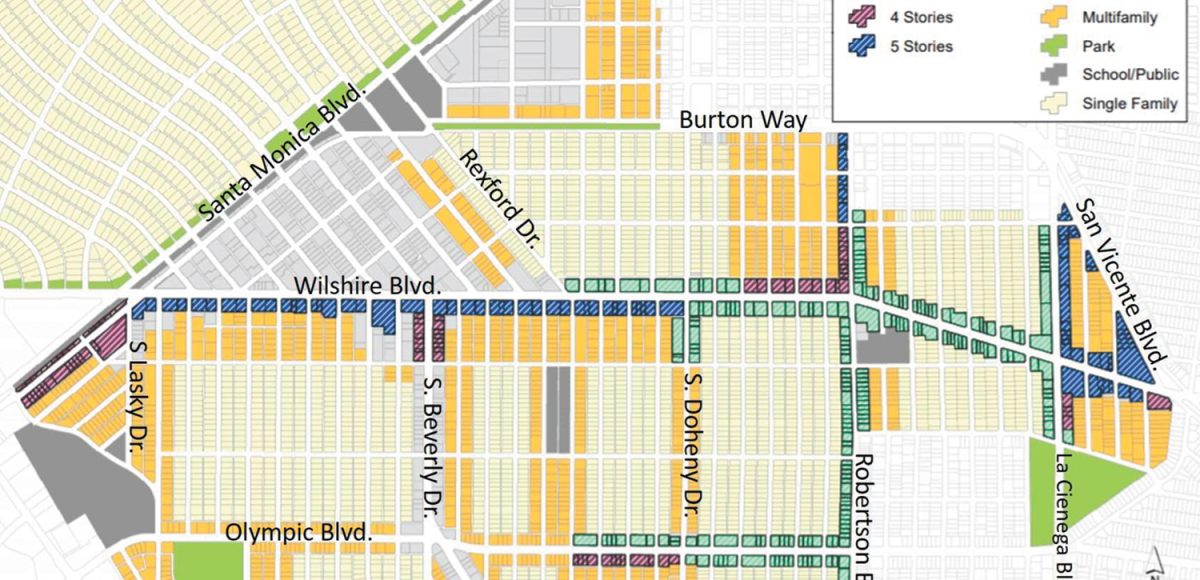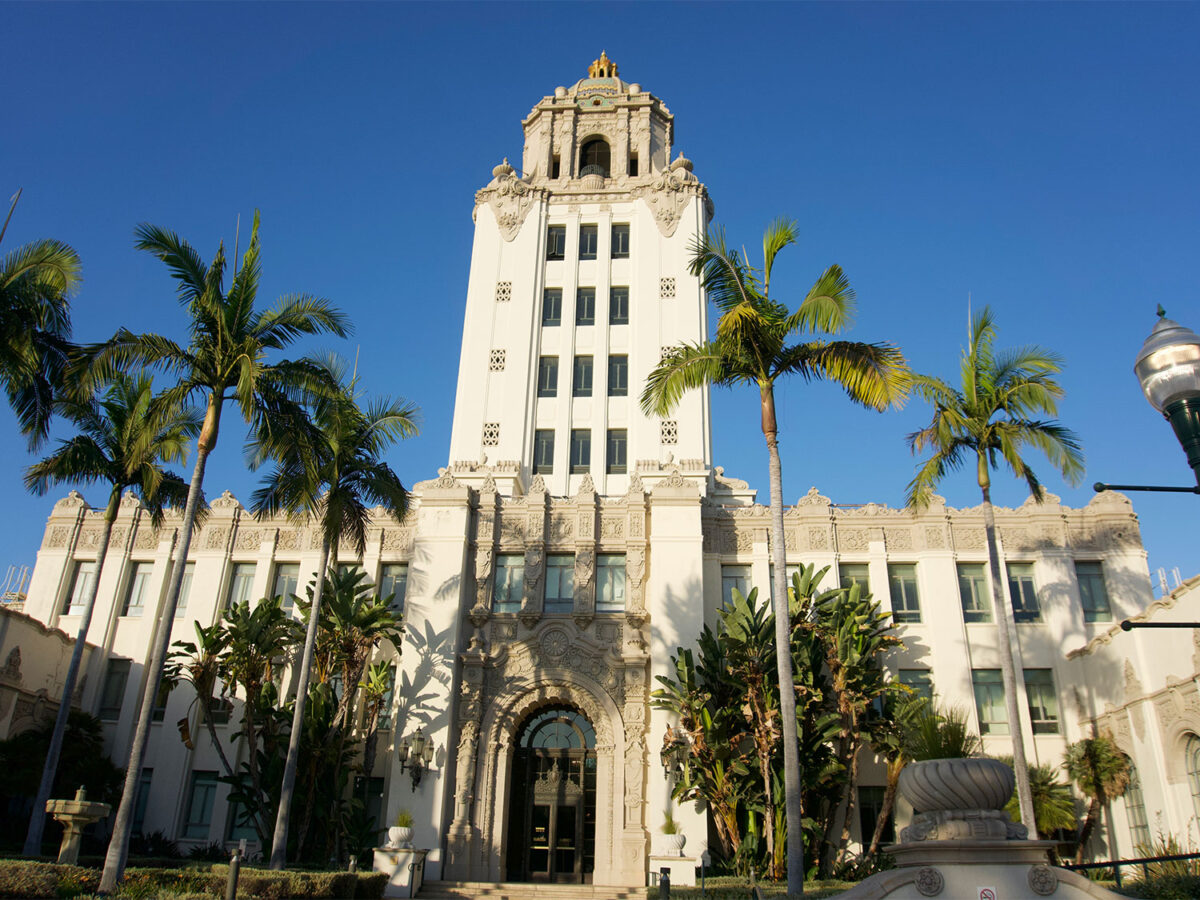Marking the end of a two-year process, the Beverly Hills City Council passed an ordinance allowing for mixed use development in certain commercial areas of the City at a Nov. 10 combined Regular Session and Study Session. Developments within the new overlay zone can include both residential and commercial uses. The amendment to the general plan was met with resistance from some residents who worried about the impact of mixed use on their quality of life. Even after the City began considering the zoning change, the measure took on added urgency with steep demands by the State to create new housing in the City. The ordinance passed 4-1, with Councilmember John Mirisch voting no.
“I think that we’re at a critical time in this City’s history,” said Councilmember Julian Gold. “This is a decision that is really important not so much for us, but for our kids and for our kids’ kids, because this is really going to define the Beverly Hills of the future.”
The City has permitted a number of mixed-use projects in the past, but these were approved as one-offs, or “spot zoning.” The ordinance creates a formalized process for developers to apply for mixed-use projects. The City first discussed mixed use in 2010, the last time the City’s General Plan was updated. In 2018, the City Council directed the Planning Commission to study mixed use zoning, with the plans developing in committee meetings and hearings over roughly the next two years.
The Council seemed poised to approve the amendment to the general plan allowing for mixed use at the Oct. 27 Regular Meeting. Councilmember John Mirisch raised last minute concerns that continued the discussion into the Nov. 10 Study Session. Mirisch expressed worries that mixed use could erode the City’s commercial tax base. He further argued that passing the ordinance could cede autonomy and leave the City vulnerable to the whims of developers. He reprised an argument from the Oct. 27 meeting that approving mixed use would constitute a handout to developers by increasing the value of their property. He advocated for a “land value recapture” to direct some of that windfall to the City.
“It’s a form of corporate welfare and it’s a developer giveaway–there’s just no other way to put it,” he said. “We are creating additional wealth for developers, to which they had no expectation when they purchase their properties, without any additional public benefits.”
City staff and other councilmembers pushed back against Mirisch’s objections. Vice Mayor Wunderlich echoed arguments made in the staff report that successful commercial projects would likely remain unchanged. “It would only be the less successful projects that would be likely to be redeveloped,” he said, thus contributing to a net boost in the City’s commercial tax base.
City Councilmember Lili Bosse went back to the origins of the discussion on mixed use. “I also want to remind everybody that, two years ago, we heard loud and clear from the community that they wanted a mixed use plan for our city, they did not want spot zoning, they did not want a case-by-case basis, and rather asked for a well thought out plan,” she said. “It promotes healthy living, housing for seniors, affordable housing, smaller units, less driving, less traffic; it promotes the village-style mix of retail, restaurants, and different types of housing.”
John Douglas, a land-use consultant for the City, explained that land value recapture “is the idea that if a city rezones property, and that results in an increase in the value of the property, that the public should share in that increase in value.” He cautioned that land value recapture could potentially discourage development and complicate the approval process for the City’s General Plan.
The passage of the ordinance comes as the City faces steep demands by the State to increase its housing stock over the next eight years. As a part of the Regional Housing Needs Assessment (RHNA) allocation, California has determined that Beverly Hills must enable development of more than 3,000 new units in the City. While not a development mandate, the City must prove to the State Department of Housing and Community Development (HCD) that its zoning and regulatory framework enables and encourages that level of development. In the event that HCD remains unconvinced by the City’s efforts, the State would step in and allow developers to build projects that circumvent many of Beverly Hills’ own housing regulations.
According to the Staff Report compiled for the Nov. 10 Study Session, allowing for mixed use developments is a crucial way of meeting the RHNA requirements. “Mixed use regulations could be an important zoning tool to provide additional housing capacity in the City in light of RHNA and the housing element update process,” the report reads.
Councilmember Bosse suggested one modification to the ordinance, allowing that the City Council could review and potentially roll back the change in six months and a year. While the City Council can review ordinances at any time, by scheduling the reviews in advance, the public has future notice in case they want to participate.
Councilmember Mirisch asked to agendize a discussion on a potential referendum on the mixed use ordinance, which would place the question in the hands of Beverly Hills voters. Mayor Lester Friedman said he would discuss whether or not to add it to the agenda, though he did not indicate when that discussion would take place.
In honor of the late Alex Trebek, Mirisch cast his vote in the form of a question.
“What is no?” he said.
Before the ordinance goes into effect, the City Council will hold a “second reading” at the Nov. 17 Regular Meeting. Then, it will go into effect 31 days after its passage.
“At that point, applicants may begin to submit projects to the City that conform with the new regulations for review and consideration by the Planning Commission,” Senior Planner Timothea Tway told the Courier.







